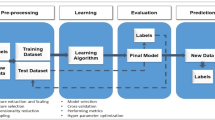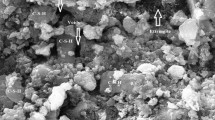Abstract
This study developed a reliable methodology combined by the machine learning technique, that is, multi-task Gaussian process regression (MTGPR) and particle swarm optimization (PSO) algorithm to identify the Johnson-Cook (JC) constants for porous structures rapidly, meanwhile reducing the experimental consumption. Ti6Al4V (TC4) porous samples with three different porosities were designed based on lattice Weaire–Phelan (LWP) structure and manufactured by selective laser melting technology. Uniaxial compressive tests of the built LWP samples were carried out to measure their mechanical properties. The resultant JC constants derived from MTGPR-PSO model were imported into the compressive finite element analyses (FEAs) of LWP structures with various porosities. It proved that the simulated mechanical behaviors presented an explicit agreement with the experimental results. Furthermore, other JC models of TC4 porous material from previous reports were utilized to perform the compressive FEAs of LWP samples, indicating that the JC models could not be shared among the porous structures fabricated by different manufacturing processes or with various lattice structures. Hence, an effective method like the MTGPR-PSO model was urgently required to identify the JC constants of porous samples customized by additive manufacturing.












Similar content being viewed by others
References
H. Gong, K. Rafi, H. Gu, T. Starr and B. Stucker, Analysis of Defect Generation in Ti–6Al–4V Parts Made Using Powder Bed Fusion Additive Manufacturing Processes, Addit. Manuf., 2014, 1–4, p 87–98.
S. Wang, L. Liu, K. Li, L. Zhu, J. Chen and Y. Hao, Pore Functionally Graded Ti6Al4V Scaffolds for Bone Tissue Engineering Application, Mater. Des., 2019, 168, p 107643.
X. Li, L. Xiao and W. Song, Deformation and Failure Modes of Ti-6Al-4V Lattice-Walled Tubes Under Uniaxial Compression, Int. J. Impact. Eng, 2019, 130, p 27–40.
H. Guo, A. Takezawa, M. Honda, C. Kawamura and M. Kitamura, Finite Element Simulation of the Compressive Response of Additively Manufactured Lattice Structures with Large Diameters, Comput. Mater. Sci., 2020, 175, p 109610.
A. Ataee, Y. Li, M. Brandt and C. Wen, Ultrahigh-Strength Titanium Gyroid Scaffolds Manufactured by Selective Laser Melting (SLM) for Bone Implant Applications, Acta Mater., 2018, 158, p 354–368.
H. Liang, Y. Yang, D. Xie, L. Li, N. Mao, C. Wang, Z. Tian, Q. Jiang and L. Shen, Trabecular-Like Ti-6Al-4V Scaffolds for Orthopedic: Fabrication by Selective Laser Melting and in vitro Biocompatibility, J. Mater. Sci. Tech., 2019, 35(7), p 1284–1297.
R. Xiao, X. Feng, R. Fan, S. Chen, J. Song, L. Gao and Y. Lu, 3D Printing of Titanium-Coated Gradient Composite Lattices for Lightweight Mandibular Prosthesis, Compos. Part B: Eng., 2020, 193, p 108057.
H. Koizumi, Y. Takeuchi, H. Imai, T. Kawai and T. Yoneyama, Application of Titanium and Titanium Alloys to Fixed Dental Prostheses, J. Prosthodont. Res., 2019, 63(3), p 266–270.
S. Bahl, B.T. Aleti, S. Suwas and K. Chatterjee, Surface nanostructuring of titanium imparts multifunctional properties for orthopedic and cardiovascular applications, Mater. Des., 2018, 144, p 169–181.
M. Doroszko, A. Falkowska and A. Seweryn, Image-Based Numerical Modeling of the Tensile Deformation Behavior and Mechanical Properties of Additive Manufactured Ti–6Al–4V Diamond Lattice Structures, Mater. Sci. Eng. A, 2021, 818, p 141362.
F. Quevedo Gonzalez and N. Nuño, Finite Element Modeling of Manufacturing Irregularities of Porous Materials, Biomater. Biomech. Bioeng., 2016, 3, p 1–14.
S. Ruiz de Galarreta, J.R.T. Jeffers and S. Ghouse, A Validated Finite Element Analysis Procedure for Porous Structures, Mater. Des., 2020, 189, p 108546.
V. Crupi, E. Kara, G. Epasto, E. Guglielmino and H. Aykul, Static Behavior of Lattice Structures Produced via Direct Metal Laser Sintering Technology, Mater. Des., 2017, 135, p 246–256.
N. Biswas and J.L. Ding, Numerical Study of the Deformation and Fracture Behavior of Porous Ti6Al4V Alloy Under Static and Dynamic Loading, Int. J. Impact. Eng, 2015, 82, p 89–102.
X. Yan, Q. Li, S. Yin, Z. Chen, R. Jenkins, C. Chen, J. Wang, W. Ma, R. Bolot, R. Lupoi, Z. Ren, H. Liao and M. Liu, Mechanical and in vitro Study of an Isotropic Ti6Al4V Lattice Structure Fabricated Using Selective Laser Melting, J. Alloys Compd., 2019, 782, p 209–223.
H. Zhou, M. Zhao, Z. Ma, D.Z. Zhang and G. Fu, Sheet and Network Based Functionally Graded Lattice Structures Manufactured by Selective Laser Melting: Design, Mechanical Properties, and Simulation, Int. J. Mech. Sci., 2020, 175, p 105480.
M. Zhao, D.Z. Zhang, F. Liu, Z. Li, Z. Ma and Z. Ren, Mechanical and Energy Absorption Characteristics of Additively Manufactured Functionally Graded Sheet Lattice Structures with Minimal Surfaces, Int. J. Mech. Sci., 2020, 167, p 105262.
N. Jin, F. Wang, Y. Wang, B. Zhang, H. Cheng and H. Zhang, Effect of Structural Parameters on Mechanical Properties of Pyramidal Kagome Lattice Material Under Impact Loading, Int. J. Impact. Eng, 2019, 132, p 103313.
Leseur, Experimental Investigations of Material Models for Ti6A1-4V and 2024-T3, 2020
G. Kay, Failure Modeling of Titanium-6Al-4V and 2024-T3 Aluminum with the Johnson-Cook Material Model, FAA report, DOT/FAA/AR-03/57, September 2003
P. Li, Constitutive and Failure Behaviour in Selective Laser Melted Stainless Steel for Microlattice Structures, Mater. Sci. Eng. A, 2015, 622, p 114–120.
Z. Wang and P. Li, Characterisation and Constitutive Model of Tensile Properties of Selective Laser Melted Ti-6Al-4V Struts for Microlattice Structures, Mater. Sci. Eng. A, 2018, 725, p 350–358.
P. Hanzl, M. Zetek, T. Bakša and T. Kroupa, The Influence of Processing Parameters on the Mechanical Properties of SLM Parts, Procedia Eng., 2015, 100, p 1405–1413.
K. Guan, Z. Wang, M. Gao, X. Li and X. Zeng, Effects of Processing Parameters on Tensile Properties of Selective Laser Melted 304 Stainless Steel, Mater. Des., 2013, 50, p 581–586.
K. Liu, D. Gu, M. Guo and J. Sun, Effects of Processing Parameters on Densification Behavior, Microstructure Evolution and Mechanical Properties of W-Ti Alloy Fabricated by Laser Powder Bed Fusion, Mater. Sci. Eng. A, 2022, 829, p 142177.
L.E. Murr, S.M. Gaytan, F. Medina, E. Martinez, J.L. Martinez, D.H. Hernandez, B.I. Machado, D.A. Ramirez and R.B. Wicker, Characterization of Ti–6Al–4V Open Cellular Foams Fabricated by Additive Manufacturing Using Electron Beam Melting, Mater. Sci. Eng. A, 2010, 527(7), p 1861–1868.
F. Kang, S. Han, R. Salgado and J. Li, System Probabilistic Stability Analysis of Soil Slopes Using Gaussian Process Regression with Latin Hypercube Sampling, Comput. Geotech., 2015, 63, p 13–25.
Y. Zhou, Y. Liu, D. Wang, G. De, Y. Li, X. Liu and Y. Wang, A Novel Combined Multi-Task Learning and Gaussian Process Regression Model for the Prediction of Multi-Timescale and Multi-Component of Solar Radiation, J. Clean. Prod., 2021, 284, p 124710.
J. Yuan, K. Wang, T. Yu and M. Fang, Reliable Multi-Objective Optimization of High-Speed WEDM Process Based on Gaussian Process Regression, Int. J. Mach. Tools Manuf., 2008, 48(1), p 47–60.
M. Gilanifar, M. Parvania, M.E. Hariri, Multi-Task Gaussian Process Learning for Energy Forecasting in IoT-Enabled Electric Vehicle Charging Infrastructure, 2020 IEEE 6th World Forum on Internet of Things (WF-IoT), 2-16 June 2020, 2020, pp 1-6
P. Nayeri, F. Yang and A.Z. Elsherbeni, Design of Single-Feed Reflectarray Antennas With Asymmetric Multiple Beams Using the Particle Swarm Optimization Method, IEEE Trans. Antennas Propag., 2013, 61(9), p 4598–4605.
A. Unler and A. Murat, A Discrete Particle Swarm Optimization Method for Feature Selection in Binary Classification Problems, Eur. J. Oper. Res., 2010, 206(3), p 528–539.
Y. Xu, W. Zhang, D. Chamoret and M. Domaszewski, Minimizing Thermal Residual Stresses in C/SiC Functionally Graded Material Coating of C/C Composites by Using Particle Swarm Optimization Algorithm, Comput. Mater. Sci., 2012, 61, p 99–105.
S. Panda and N.P. Padhy, Comparison of Particle Swarm Optimization and Genetic Algorithm for FACTS-Based Controller Design, Appl. Soft Comput., 2008, 8(4), p 1418–1427.
R. Hassan, B. Cohanim, O. de Weck, G. Venter, A Comparison of Particle Swarm Optimization and the Genetic Algorithm, 46th AIAA/ASME/ASCE/AHS/ASC Structures, Structural Dynamics and Materials Conferenceed., American Institute of Aeronautics and Astronautics, 2005
M. Hao, C. Wei, X. Liu, Y. Ge and J. Cai, Quantitative Evaluation on Mechanical Characterization of Ti6Al4V Porous Scaffold Designed Based on Weaire-Phelan Structure via Experimental and Numerical Analysis Methods, J. Alloys Compd., 2021, 885, p 160234.
International Organization for Standardization (ISO), ISO 13314: Mechanical Testing of Metals – Ductility Testing – Compression Test for Porous and Cellular Metals, First edition 2011-12-15, 2011
Y. Prawoto, M. Fanone, S. Shahedi, M.S. Ismail and W.B. Wan Nik, Computational Approach Using Johnson-Cook Model on Dual Phase Steel, Comput. Mater. Sci., 2012, 54, p 48–55.
C.E. Rasmussen, Gaussian Processes in Machine Learning, Advanced Lectures on Machine Learning: ML Summer Schools 2003, Canberra, Australia, February 2 - 14, 2003, Tübingen, Germany, August 4 - 16, 2003, Revised Lecturesed., O. Bousquet, U. von Luxburg, G. Rätsch, Eds., Springer Berlin Heidelberg, 2004, p 63–71
E.V. Bonilla, K.M.A. Chai, C.K.I. Williams, Multi-task Gaussian Process prediction, Proceedings of the 20th International Conf. Neural Information Processing Systemsed., Curran Associates Inc., 2007, p 153–160
R. Couperthwaite, D. Allaire and R. Arróyave, Utilizing Gaussian Processes to Fit High Dimension Thermodynamic Data that Includes Estimated Variability, Comput. Mater. Sci., 2021, 188, p 110133.
J.L. Loeppky, J. Sacks and W.J. Welch, Choosing the Sample Size of a Computer Experiment: A Practical Guide, Technometrics, 2009, 51(4), p 366–376.
R.T. Silvestrini, D.C. Montgomery and B. Jones, Comparing Computer Experiments for the Gaussian Process Model Using Integrated Prediction Variance, Qual. Eng., 2013, 25(2), p 164–174.
Y. Zhang, J.C. Outeiro and T. Mabrouki, On the Selection of Johnson-cook Constitutive Model Parameters for Ti-6Al-4V Using Three Types of Numerical Models of Orthogonal Cutting, Procedia CIRP, 2015, 31, p 112–117.
H. Zhang, Maximum-Likelihood Estimation for Multivariate Spatial Linear Coregionalization Models, Environmetrics, 2007, 18(2), p 125–139.
Y. Liu, Y. Zhou, D. Wang, Y. Wang, Y. Li and Y. Zhu, Classification of Solar Radiation Zones and General Models for Estimating the Daily Global Solar Radiation on Horizontal Surfaces in China, Energy Conv. Manag., 2017, 154, p 168–179.
R. Zhang and X. Xue, A Predictive Model for the Bond Strength of Near-Surface-Mounted FRP Bonded to Concrete, Compos. Struct., 2021, 262, p 113618.
S. Arabnejad, R. Burnett Johnston, J.A. Pura, B. Singh, M. Tanzer and D. Pasini, High-Strength Porous Biomaterials for Bone Replacement: A Strategy to Assess the Interplay Between Cell Morphology, Mechanical Properties, Bone Ingrowth and Manufacturing Constraints, Acta Biomater., 2016, 30, p 345–356.
D. Gu and Y. Shen, Processing Conditions and Microstructural Features of Porous 316L Stainless Steel Components by DMLS, Appl. Surf. Sci., 2008, 255(5, Part 1), p 1880–1887.
R. Hedayati, H. Hosseini-Toudeshky, M. Sadighi, M. Mohammadi-Aghdam and A.A. Zadpoor, Computational Prediction of the Fatigue Behavior of Additively Manufactured Porous Metallic Biomaterials, Int. J. Fatigue, 2016, 84, p 67–79.
P. Li, Y.E. Ma, W. Sun, X. Qian, W. Zhang and Z. Wang, Fracture and Failure Behavior of Additive Manufactured Ti6Al4V Lattice Structures Under Compressive Load, Eng. Fract. Mech., 2021, 244, p 107537.
Acknowledgment
This work was supported by the National Natural Science Foundation of China [Grant Number 81973872], the Natural Science Foundation of Jiangsu Province [Grant Number BK20190309], General University Science Research Project of Jiangsu Province [Grant Number TJ21903].
Author information
Authors and Affiliations
Corresponding author
Additional information
Publisher's Note
Springer Nature remains neutral with regard to jurisdictional claims in published maps and institutional affiliations.
Rights and permissions
About this article
Cite this article
Hao, M., Yu, Q., Wei, C. et al. Statistical Determination of Johnson-Cook Model Parameters for Porous Materials by Machine Learning and Particle Swarm Optimization Algorithm. J. of Materi Eng and Perform 31, 7176–7190 (2022). https://doi.org/10.1007/s11665-022-06765-w
Received:
Revised:
Accepted:
Published:
Issue Date:
DOI: https://doi.org/10.1007/s11665-022-06765-w




